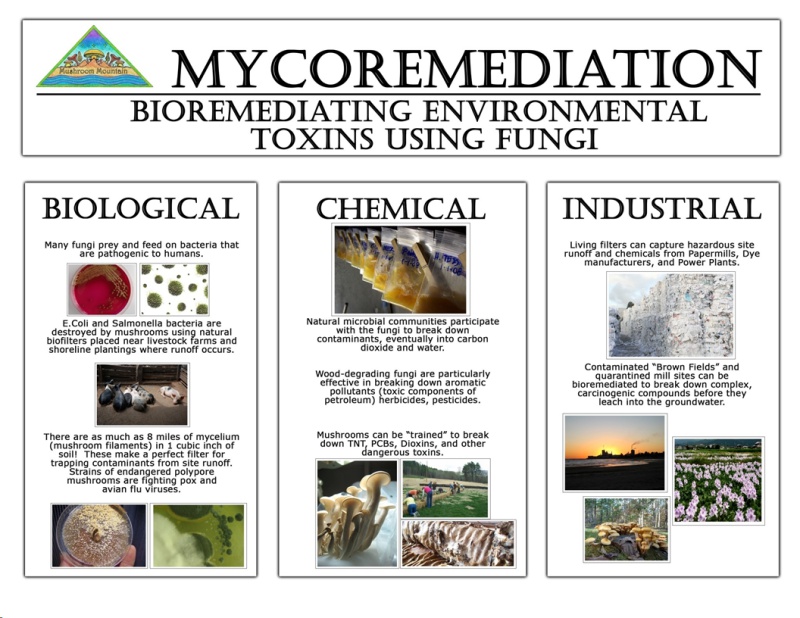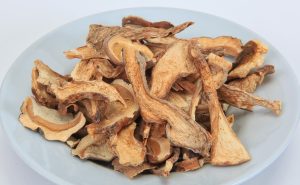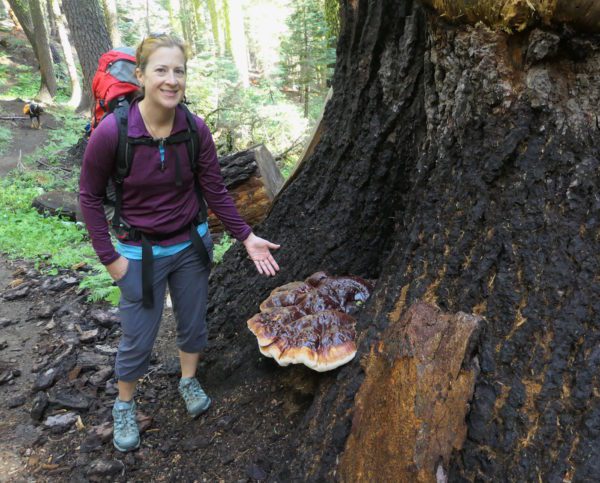You might wonder why humans would ever decide to eat mushrooms. After all, mushrooms are a fungus, and many varieties are toxic. Unlike plants, mushrooms lack chlorophyll and do not require sunlight to grow. Instead, mushrooms grow from the decaying and deceased matter of plants and animals. Their cell walls do not contain plant cellulose but chitin, a carbohydrate-amine complex that also makes up the outer skeleton of insects and crustaceans. These characteristics can cause some people to write mushrooms off as inedible.
Yet mushrooms grow like any other plant rooted in the soil — by extracting nutrients from the ground. And like plant foods, mushrooms are a good source of protein, vitamins, and fiber. As a vegetarian food, mushrooms are unique because they contain high concentrations of the vitamin D precursor, ergosterol, which converts into vitamin D when exposed to ultraviolet radiation. This process is similar to how your skin synthesizes the vitamin in response to sun exposure.[1]
From a culinary point of view, mushrooms add a delicious savory flavor to meals due to the naturally occurring monosodium glutamate. This makes mushrooms an excellent replacement for meat in trail food.

Get Mushrooms from a Trusted Source
Ideally, you want edible mushrooms to be grown in a pure and organic substrate that has not been treated with chemicals. Mushrooms are very porous and absorb chemical spray, such as pesticides and heavy metals from the soil. In fact, in a process called mycoremediation, mushrooms are used as a cheap method for decontaminating toxic chemicals and industrial waste from soil and water.[2]

Naturally, most mushrooms grown for human consumption are done so in controlled environments. Still, if you buy dried mushrooms — or trail food containing dried mushrooms — it’s a good idea to ask where and how the mushrooms are grown.
Of course, you can also forage mushrooms if you know how to identify edible varieties. If you do forage, be careful! There’s a good probability that you could poison yourself if you don’t know what you’re picking.
Speaking of mushrooms growing in the wilderness, if you’ve ever wondered why some mushrooms, such as truffles, chanterelles, and boletes are expensive, it’s because these can’t be mass-cultivated like common button mushrooms. Instead, they require living trees to grow and must be gathered by hand from a forest or wilderness.
Fun fact: White button mushrooms, champignon mushrooms, cremini mushrooms, and portabello mushrooms are all the same mushrooms at different levels of maturity.
Always Cook Mushrooms
As mentioned, the cell wall of fungi contains chitin, which must be broken down with heat to make it digestible and the nutrients available for assimilation as food. Though humans produce enzymes that break down chitin, the process is inefficient in our digestive tract.
If you dry mushrooms at home, you can speed up the drying process by first dry sauteing your mushrooms in a skillet on medium heat for a few minutes. This cooks off the high amount of water in the mushroom and concentrates the flavor.

View Outdoor Herbivore’s meals containing mushrooms.
Let us know in the comments — do you want to see more mushrooms in your trail food?

Related Posts:
References
[1] https://www.ncbi.nlm.nih.gov/pmc/articles/PMC3897585/ M., Williams, J. E. and Holick, M. F. Keegan, R., Lu, Z., Bogusz, J., Williams, J., & Holick, M. (2013). Photobiology of vitamin D in mushrooms and its bioavailability in humans. Dermato-Endocrinology, 5(1), 165-176. doi:10.4161/derm.23321
[2] Bosco, F., & Mollea, C. (2019). Mycoremediation in Soil. Biodegradation Processes [Working Title]. doi:10.5772/intechopen.84777 https://www.intechopen.com/online-first/mycoremediation-in-soil
[3] https://radicalmycology.com/educational-tools/mushrooms-101/what-are-mushrooms/